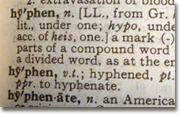Well, it might be, “An apple a day….” Or maybe healthy food and plenty of exercise and good sleep. Maybe even an extra hug or two every day.
 While all of these are very good ideas, today let’s talk about something you can do easily, and enjoy with your children, making memories for them and for you. What is this mystical something? Read to your kids every day for at least the first eight years of their lives.
While all of these are very good ideas, today let’s talk about something you can do easily, and enjoy with your children, making memories for them and for you. What is this mystical something? Read to your kids every day for at least the first eight years of their lives.
According to a recent Harris Interactive study reported this week in our daily paper, some 87% of the 1,003 U. S. parents of children eight years old or younger they interviewed said they read bedtime stories to their kids. But only about a third of them read to their children every day, according to the national study conducted in April of this year, sponsored by the literacy nonprofit organization Reading is Fundamental.
When asked what their children do most of the time, half of the respondents said television or video games. Not reading. According to officials at the Reading is Fundamental organization, “…parental reading helps children acquire large vocabularies and become comfortable with decoding words and sentences by the end of third grade. That’s technically when children are about eight years old and when school curriculum switches from ‘learning to read’ to ‘reading to learn.’”
Isn’t that a great phrase, a switch from “learning to read to reading to learn”?
This comes as no surprise, when we realize that words are, in fact, symbols that stand for an entire concept. That word, or that phrase, wraps the concept into a neat, manageable package that you and I, and our children, can work with.
According to Reading is Fundamental, reading to children daily during their earliest years allows them to start hearing, seeing, and learning words that are not usually part of their day-to-day lives. If your child does not have these, what RIF calls “decoding skills,” by the third grade, he or she will not have the vocabulary, and therefore will not have the concept, putting your child behind before he or she can get off to a good start.
So where to start?
Picture books are especially fine for building vocabulary. A child may not really understand, for example, what a turkey is. But with repeated reading, the word “turkey” ties in with the picture of the turkey, and the child gets the concept of the word “turkey.”
The daily reading time can be any time, or several times, during the day or night. While it does not have to be the traditional “bedtime story,” incorporating story-reading as part of the night-time ritual can be a calming routine, and tends to help children look forward to bedtime (and story time), making it easier on children and parents alike. The most important thing, according to RIF, is to make the story-reading, or story-telling time a regular daily event – even if you have just a few minutes – and to create a pleasant habit for both parent and child.
The organization also suggests some creative ways to build vocabulary, and to package concepts, including some that work well when the parent is short on time, or just plain exhausted. Here are a few:
• Choose a single page of a picture book – children always seem to have their favorite pages – look at it, and talk about it. Your children may even enjoy making up their own stories about what happened before, or what is going to happen after the picture on the page. Read a poem. Tell a family story. If you’re excited about it, they will be too.
• Most children enjoy hearing stories about when their parents were children, especially when it involves something funny, or something similar to what is going on in their own lives.
• Participate in story times at your local library. Borrow books to take home to read. Many families have books the parents read as children. Or how about writing a story with your child? Keep it easy. You can use a spiral-bound tablet, or single sheets, with the parent writing down the child’s words, and the child “illustrating” the story. Sheets can be stapled down the side to make a book, pasted into the spiral-bound tablet, or punched and put into a notebook.
• Your stories can be imaginary, or based on something you did with your child – going to the park, the zoo, or taking a road trip, for example. Talk about what you are seeing, how it sounds, and how you feel about it. Talk about the things you are doing. Take turns asking questions, and answering them. Then write about them.
• And finally, “…look for words and letters around you…many children…learned the letter M from McDonald’s…and ‘stop’ from a stop sign.” And play alphabet games with your kids, they suggest.
To receive your Business Writing Tip of the Week automatically every week please subscribe to our newsletter. We appreciate your recommending a Gail Tycer business writing workshop for your workplace, or a shorter presentation for an upcoming professional meeting. Share us on Facebook, LinkedIn, and Twitter. Thank you, and let us hear from you!

 [
[